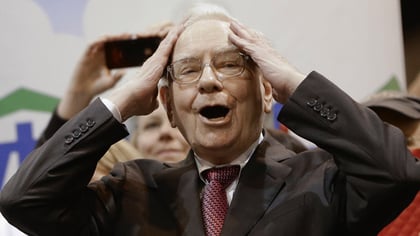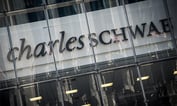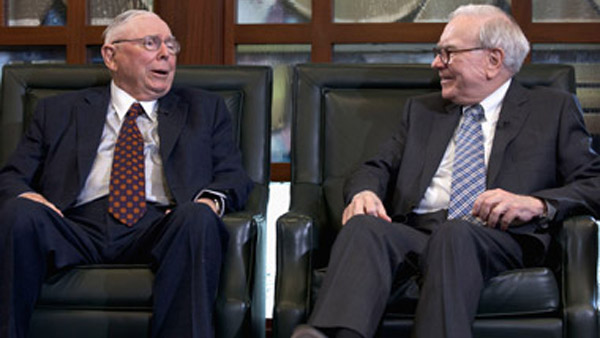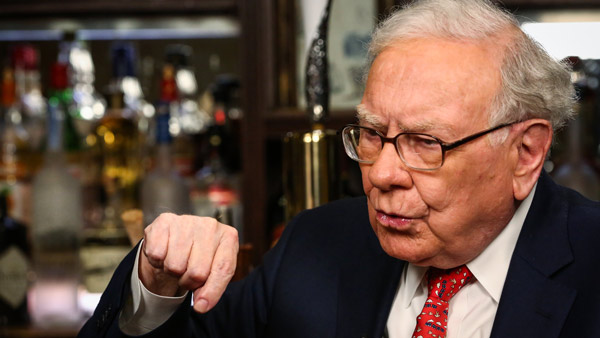
Another strong year for the markets means another great year for Berkshire Hathaway.
As Chairman Warren Buffett described in his Feb. 25 letter to investors, Berkshire had a gain in net worth of $65.3 billion in 2017. That translated into a 23% increase in the per-share book value of its stock.
In the last 53 years, that figure has grown at a 19% yearly compound rate.
While $36 billion of that gain came from Berkshire’s operations, Buffett says, the rest — $29 billion — resulted from the recent tax-reform package.
How are Berkshire shares doing vs. the S&P 500? They rose 21.9% last year vs. 20.9% for the index, including dividends.
And, as Buffett points out, the firm’s figures are post-tax, while those of the index are pretax.
Read on to understand the wisdom behind those results and to prepare for Berkshire’s annual meeting, set for 8:45 a.m. on May 5 and available via livestream on the web:

1. Acquisitions That Count
When it comes to buying standalone businesses, Berkshire Hathaway seeks firms with the following: “durable competitive strengths; able and high-grade management; good returns on the net tangible assets required to operate the business; opportunities for internal growth at attractive returns; and, finally, a sensible purchase price.”
This last requirement, Buffett says, proved difficult to meet in most cases in 2017 as prices for many businesses were at all-time highs.
The easy availability of cheap debt last year helped fuel this and busy M&A activity.
Berkshire, though, likes to look at acquisitions on an “all-equity basis.”
“Our aversion to leverage has dampened our returns over the years. But Charlie and I sleep well. Both of us believe it is insane to risk what you have and need in order to obtain what you don’t need,” Buffett explained.
As for the rest of the corporate investing universe, the less prudent they are in their affairs, “the greater the prudence with which we must conduct our own.”

2. The Importance of Standout Purchases
Despite the cautious nature of its M&A operations, Berkshire bought a nearly 40% stake in Pilot Flying J (or PFJ) last year.
With about $20 billion in annual volume, Buffett says, “the company is far and away the nation’s leading travel-center operator,” run by “the remarkable Haslam family.”
Its operations include 750 sites in North America.
Berkshire stuck a deal in which it can boost its interest in PFJ to 80% in 2023.
The pit stops have food, gas and 5,200 showers.

3. Bolt-on Acquisitions
Clayton Homes bought two builders of conventional homes, which more than doubled Berkshire’s presence in this industry, which it entered three years ago. Along with Oakwood Homes in Colorado and Harris Doyle in Birmingham, Clayton’s site built volume should top $1 billion this year, the Oracle of Omaha says.
Plus, the builder also is focused on manufactured housing. Last year, it sold over 19,000 units via its own retail operations and another 26,700 through wholesale operations.
As a result, Clayton’s controls nearly 50% of the market for manufactured homes.
That’s “a far cry from the 13% Clayton achieved in 2003, the year it joined Berkshire,” Buffett says.
Both Clayton Homes and PFJ are based in Knoxville, Tennessee. Kevin Clayton told PFJ’s owners about the advantages of a Berkshire affiliation, which helped Buffett “cement the PFJ deal.”
Another Berkshire-owned firm, Shaw Industries, recently bought a rival that makes luxury vinyl tile, U.S. Floors.
“USF’s managers, Piet Dossche and Philippe Erramuzpe, came out of the gate fast, delivering a 40% increase in sales in 2017, during which their operation was integrated with Shaw’s,” Buffett boasted.
HomeServices, Berkshire’s real estate brokerage business, “exploded” by picking up the third-largest operator, Long and Foster; the 12th-largest, Houlihan Lawrence; and Gloria Nilson.
Then there’s Precision Castparts, which recently bought Wilhelm Schulz, a German maker of corrosion-resistant fittings, piping systems and parts.
“Mark Donegan, CEO of Precision, is an extraordinary manufacturing executive, and any business in his domain is slated to do well. Betting on people can sometimes be more certain than betting on physical assets,” the Oracle of Omaha explained.

4. The Right Insurance
Berkshire got into this business by buying National Indemnity and a sister company for less than $9 million in 1967.
It then used its nearly $7 million of tangible net worth to invest in marketable securities.
Plus, the insurance operation had about $19 million of “float,” or funds that belonged to others but were held by Berkshire’s two insurers.
“Ever since, float has been of great importance to Berkshire. When we invest these funds, all dividends, interest and gains from their deployment belong to Berkshire,” Buffett explained.
The insurance business it owns specializes in medical malpractice and product liability, which create far more float than, say, operations focused on car crashes and homeowner policies, which require nearly immediate payouts.
Property and casualty float can’t be withdrawn, so there’s no risk of big “runs” in times of financial stress, Buffet says.
“Charlie and I never will operate Berkshire in a manner that depends on the kindness of strangers — or even that of friends who may be facing liquidity problems of their own,” he explained.
In the financial crisis a decade ago, Berkshire had “loads of Treasury bills that protected us from having to rely on funding sources such as bank lines or commercial paper,” Buffett said. “We have intentionally constructed Berkshire in a manner that will allow it to comfortably withstand economic discontinuities, including such extremes as extended market closures.”
As for other risks, Berkshire’s insurance managers are “conservative and careful underwriters,” he points out.
“That disciplined behavior has produced underwriting profits in most years, and in such instances, our cost of float was less than zero,” the investment guru said.

5. The Value of Human Capital
Still, Berkshire has lost $2 billion after taxes from the three hurricanes of 2017. That reduced Berkshire’s GAAP net worth by less than 1%.
“No company comes close to Berkshire in being financially prepared for a $400 billion mega-catastrophe,” Buffet says.
“Our share of such a loss might be $12 billion or so, an amount far below the annual earnings we expect from our non-insurance activities,” he explained. “Our unparalleled financial strength explains why other P/C insurers come to Berkshire — and only Berkshire — when they, themselves, need to purchase huge reinsurance coverages for large payments they may have to make in the far future.”
Before last year, Berkshire had 14 consecutive years of underwriting profits, totaling $28.3 billion pretax. But last year, the firm lost $3.2 billion pretax from underwriting.
Buffet pulls no punches regarding this development.
“The only point I will add here is that you have some extraordinary managers working for you,” he wrote. “This is a business in which there are no trade secrets, patents or locational advantages. What counts are brains and capital.”

6. Long-Term Investments









 February 28, 2018 at 03:22 PM
February 28, 2018 at 03:22 PM















